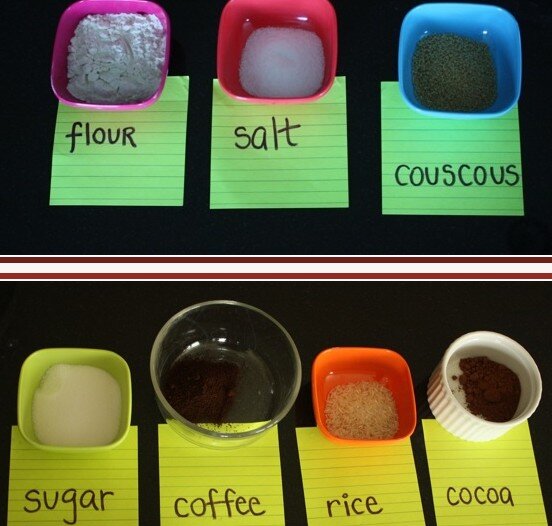Science experiments for children – Does it dissolve? In chemistry, a solution is a homogeneous system that can be decomposed by means of physical separation. In a solution the solute is dispersed in the solvent at the level of individual molecules, each surrounded by solvent molecules. It’s called solute the substance (or substances) in smaller quantities and solvent the substance in greater quantities.
http://www.thepickyapple.com/blog/
Let’s find out with the kids what elements are soluble in water and which are not, using the sequence prediction, experiment, observation, conclusion. We explain what it means solution and introduce the concepts of solvent and solute. Then we prepare the material.
___________________________
Science experiments for children – Does it dissolve?
What do you need?
various transparent containers filled with water;
spoons;
bowls containing substances selected for the experiment (flour, salt, rice, coffee grounds, couscous, sugar, prepared for iced tea, and all you want);
cards to label the bowls,
a card in which we will write “Soluble” and one in which we will write “Insoluble”.
Ask the child to make his prediction by dividing the bowls in two groups: soluble and insoluble, so leave him free to try. As the experiment progresses, the substances that may be the wrong move in the right group.
_______________________
Science experiments for children – Does it dissolve?
Other links
http://www.thepickyapple.com/blog/
http://handsonaswegrow.com/kids-what-dissolves-in-water-experiment/
http://nerdybaby.blogspot.it/2013/11/does-it-dissolve.html
http://www.coffeecupsandcrayons.com/does-it-dissolve-kids-science-experiment/
http://www.science-sparks.com/2011/11/17/exploring-which-solids-dissolve-in-water/